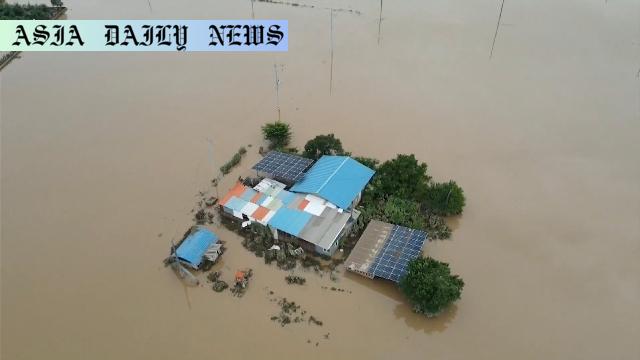Floods have wreaked havoc across South Korea due to heavy rain, leaving 10 dead, 8 missing, and displacing over 3,000 residents.
Floods and heavy downpours in South Korea leave 10 dead and 8 missing.
Over 800mm of rain in Sancheong leads to floods and landslides.
More than 3,000 residents evacuated; recovery and rescue efforts ongoing.

Heavy Rain Pummels South Korea and Sparks Flooding
Since Wednesday, torrential rain has swept across wide parts of South Korea, leading to significant devastation in terms of human lives and property. According to data released by the Ministry of the Interior and Safety on Sunday morning, the disaster has claimed the lives of 10 individuals, with 8 remaining missing. Rescue operations and monitoring continue in hopes of mitigating further casualties and damage.
Over the past five days, Sancheong — situated in the southern region of Gyeongsangnam-do — has borne the brunt of the relentless downpour, receiving an astonishing 800 millimeters of rain. The area has experienced floods, landslides, and substantial infrastructure damage, leaving it among the hardest-hit regions. Of the fatalities and missing persons, six were confirmed dead, and another six remain unaccounted for specifically in this region as of Sunday morning.
Magnitude of Impact and Displacement
The catastrophic weather has forced families to abandon their homes and seek refuge. Reports indicate that more than 3,000 individuals have been evacuated from their properties due to the imminent risks of landslides and rising water levels. Essential services, including power and transportation, have been severely disrupted in affected zones, with road closures and power outages widespread across Sancheong and nearby areas.
Rescue and Recovery Efforts: A Race Against Time
Despite the overwhelming challenges posed by debris, water levels, and accessibility issues, local authorities and rescue teams are working tirelessly to locate missing persons and support affected communities. The combination of recovery efforts, including debris clearing and utility restoration, is ongoing.
Although weather-related emergencies such as this are not uncommon during South Korea’s rainy season, the severity of the flooding has brought renewed attention to disaster management and preparedness frameworks in the region.



Commentary
The Challenges of Natural Disasters in South Korea
Extreme weather events, such as the heavy rain currently gripping South Korea, are a somber reminder of our vulnerability to nature’s unpredictable forces. Such catastrophes highlight the urgent need to invest in predictive weather monitoring and disaster preparedness systems not only in South Korea but globally. While South Korea has demonstrated resilience amid these challenges, the need for support systems and resources catering to displaced and affected communities remains paramount.
The Importance of Safety in Vulnerable Regions
Sancheong, with its record-breaking rainfall of 800 millimeters, calls for attention to reinforce safety measures in regions prone to flooding and landslides. The tragic loss of lives underscores the importance of proactive safety protocols and responsive infrastructure solutions to mitigate the consequences of similar disasters. Strengthening evacuation planning and enhancing resource allocation for response teams could help reduce future casualties.
Lessons for the Global Community
This devastating event serves as a cautionary tale for any nation vulnerable to natural disasters. Governments, organizations, and communities must come together to create comprehensive approaches that focus equally on emergency response and long-term systemic improvements to avoid or lessen the damage from weather-related hazards.
While the scars of this tragedy will remain for South Korea, it provides an opportunity to emerge stronger and serve as a case study for sustained infrastructure development and human safety resilience.